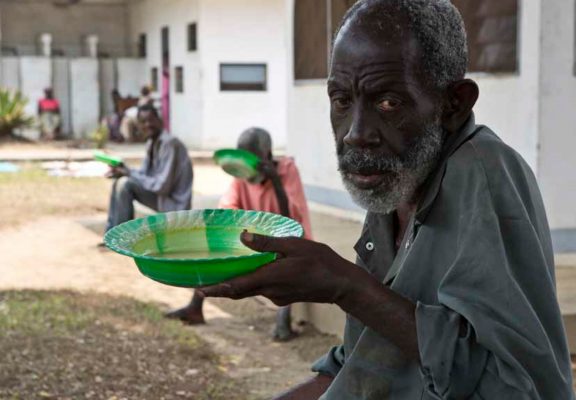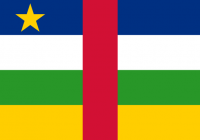


Central African Republic
Central Africa Republic is a landlocked country in Central Africa. It is bordered by Chad to the north, Sudan to the northeast, South Sudan to the east, the Democratic Republic of the Congo and the Republic of the Congo to the south and Cameroon to the west. The CAR covers a land area of about 620,000 square kilometres (240,000 sq mi) and had an estimated population of around 4.7 million as of 2014. Its GDP per capita is USD 333.
The Central African Republic (CAR) has been affected by more than 30 years of political and social unrest. While CAR is heavily affected by HIV and AIDS with a high HIV prevalence rate among adults (3.8 percent), malaria is the greatest killer. CAR is one of the priority countries in the fight against TB in the region. The already precarious health situation in CAR was made worse with the renewed outbreak of inter-community violence in some parts of the country from early December 2013. Due to the conflict, the population of CAR is increasingly vulnerable to HIV, sexual and gender-based violence, and transmission of HIV and TB in overcrowded displacement sites and impoverished families and communities. The Global Fund is committed to continue working with its partners in CAR to continue essential services, provide antiretroviral therapy and first- and second-line TB drugs, distribute bed nets and support other related services.
AHO PRIORITIES FOR HEALTH DELIVERY PLAN IN CENTRAL AFRICA REPUBLIC
- Health sector reform strategy:
- Human resource development.
- Strategic planning, monitoring and evaluation.
- Quality improvement, norms, and standards of care.
- Disaster preparedness.
- Health information analysis, surveillance and information systems:
- Comprehensive health information system.
- Training of service managers in the analysis and use of information for programming and decision-making.
- Design and implementation of comprehensive surveillance systems.
- Environmental health:
- Epidemiology and environmental impact assessment.
- Food safety.
- National water quality standards.
PROGRAMMES & PROJECTS
1. ENVIRONMENTAL PROTECTION AND DEVELOPMENT
PURPOSE
To strengthen the overall management of the environmental health department, particularly with regard to monitoring indicators for sustainable development
EXPECTED RESULTS
- Technical capacity of the environmental health department improved.
- Food safety program established and efficiently managed.
- Water quality standards established.
2. HEALTH SERVICES STRENGTHENING
PURPOSE
To strengthen public health practices.
EXPECTED RESULTS
- AHO capacity strengthened in monitoring, analysing, and evaluating of the population’s health situation.
- AHO capacity strengthened in public health surveillance.
- Human resource development and training in public health strengthened.
- Institutional capacity improved in planning and management.
- AHO capacity improved to ensure the quality of personnel and population-based services.
RESOURCES (USD)
AHO CENTRAL AFRICA REPUBLIC BUDGET 2020 (USD million)* based on 2017 pop 4.659 million World Bank
| SO | BUDGET ITEM | AMOUNT* |
| 1 | Combating communicable diseases | 77 |
| 2 | Tackling non communicable diseases | 90 |
| 3 | Addressing determinants of health & risk factors | 70 |
| 4 | Modernising health system and health service | 75 |
| 5 | Improving preparedness, surveillance and response | 76 |
| 6 | Developing good governance & corporate services | 78 |
| Total | 466 |
*AHO estimates that it needs to spend at least USD100 per capita on health to meet the basic health needs of the people in Africa. This is too far below developed countries e.g. in England it is US$1,300 per capita (2017)

